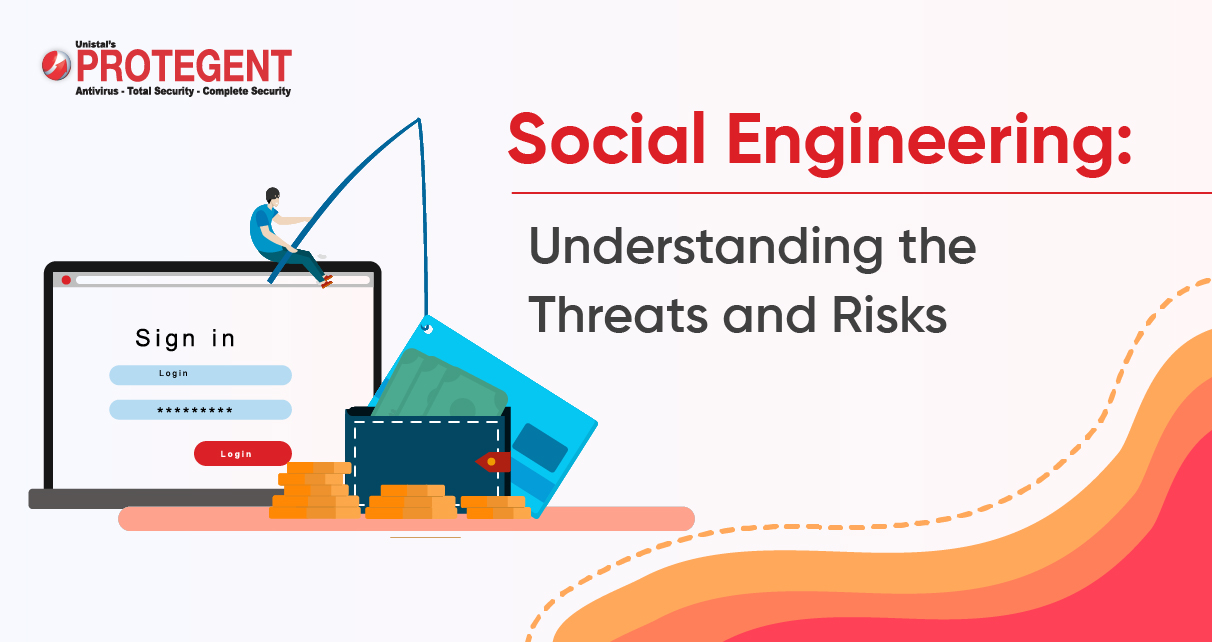
Don’t Take the Bait: How to Avoid Social Engineering Scams
With 5.3 million compromised accounts, India ranked fifth among the nations with the most breaches in 2023. There is a constant warning about the dangers of viruses, malware, and hackers. But there’s another type of cyber threat that is far more personal and manipulative: ‘Social Engineering.’ While most of us think of cyber threats as technical, social engineering is different—it targets human psychology, not just technology. Want to know how? Let’s dwell into this-
What is Social Engineering?
Social engineering is essentially the art of manipulating people into giving up confidential information. Unlike traditional hacking, which focuses on exploiting technical vulnerabilities, social engineering preys on human vulnerabilities. It’s a type of psychological manipulation where attackers trick individuals into revealing sensitive data, such as passwords, bank information, or even access to secure systems.
This kind of attack can happen to anyone, anywhere. You might receive a convincing email that looks like it’s from your bank, asking you to verify your account details. Or maybe a phone call from someone claiming to be tech support who just needs remote access to your computer to fix a non-existent issue. These are classic examples of social engineering in action.
A recent survey revealed that 20% of Indian consumers experienced cyberattacks in the first quarter of 2024, while 12,454,797 cyberthreats were stopped. In the same time frame, over 740,000 complaints about cybercrime were submitted to the National Cybercrime Reporting Portal, and cyber fraud cost Indians Rs. 1,750 crores.
How Does It Work?
Social engineering attacks often follow a predictable pattern. First, the attacker researches their target, gathering as much information as possible. This could involve studying social media profiles, gathering publicly available data or even dumpster diving for discarded documents. The more they know, the more convincing their approach will be.
Once armed with information, the attacker makes contact. This could be through email, phone, text, or even in person. The goal is to establish trust, often by pretending to be someone the target knows or should trust, such as a co-worker, an IT support person, or even a representative from a trusted organization.
The final step is exploitation. The attacker uses the trust they’ve built to convince the target to provide sensitive information, install malicious software, or perform actions that compromise security. Because the request seems legitimate, the target might not realize they’ve been duped until it’s too late.
Have you ever faced this scenario or anyone in your know?
Here is a list of common types of social engineering attacks that users face, and because of unawareness or mistakes, they become prey.
- Phishing: Phishing is a type of social engineering that is most often recognised and entails sending phoney emails that seem to be from a reliable source. These emails usually contain links or attachments that, when clicked, lead to the compromise of personal information or the installation of malware.
According to Acronis, a pioneer in cyber protection, phishing is India’s most prevalent type of cyberattack, making up over 84% of all cyber threats received annually. According to Acronis, attacks increased 464% YoY in 2023.
- Spear Phishing: A more targeted version of phishing, spear phishing focuses on a specific individual or organization. The attacker customizes their approach based on the information they’ve gathered about the target, making the attack more convincing and challenging to detect.
- Pretexting: In pretexting, the attacker creates a fabricated scenario to obtain information from the target. This could involve pretending to be a co-worker needing access to a file, a law enforcement officer conducting an investigation, or even a family member in distress.
- Baiting: Baiting involves offering something enticing, like free music downloads or a USB drive left in a public place, to trick the target into downloading malware or providing personal information.
- Quid Pro Quo: This kind of attack entails providing something in return for knowledge. For example, an attacker might pose as a tech support agent offering to fix a problem in exchange for access to the target’s computer.
Protecting Yourself Against Social Engineering
The best defense against social engineering is awareness. You can be more alert and less prone to fall for an attacker’s tricks if you know their strategies. Here are some key strategies to protect yourself:
- Be Skeptical: Always question unsolicited requests for information, especially if they seem urgent or out of the ordinary. Never be afraid to ask for identification before granting access to anyone requesting sensitive information.
- Educate Yourself: Regularly update your knowledge of social engineering tactics. Knowing what to look for can help you spot potential attacks before they succeed.
- Secure Your Information: Be mindful of what you share online and limit the personal information you make publicly available. Use antivirus software for online security and safety. This reduces the chances of an attacker gathering enough data to target you.
- Use Multi-Factor Authentication (MFA): MFA adds an extra layer of security by requiring two or more forms of identification before granting access to accounts. Even if an attacker obtains your password, MFA can prevent them from accessing your accounts.
- Report Suspicious Activity: If you suspect a social engineering attack has targeted you, report it immediately to your organization’s security team or the appropriate authorities. Reporting the incident immediately helps lessen the harm and stop additional attacks.
Social engineering is a powerful and dangerous tool in the arsenal of cybercriminals. By exploiting our natural tendencies to trust and help others, attackers can bypass even the most sophisticated security measures. However, by staying informed and adopting good security practices, we can protect ourselves and our organizations from falling victim to these psychological traps. Keep in mind that awareness is your strongest weapon when it comes to social engineering. You can also use antivirus software to keep your digital world safe!




